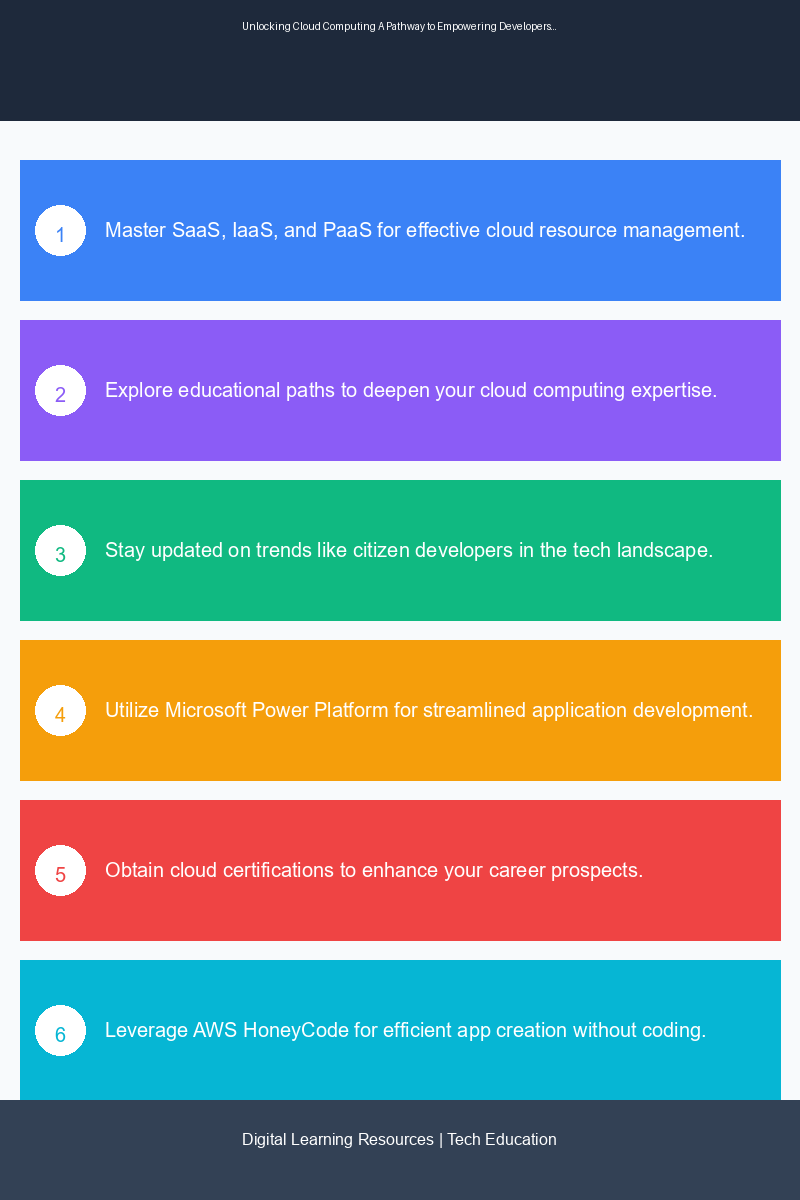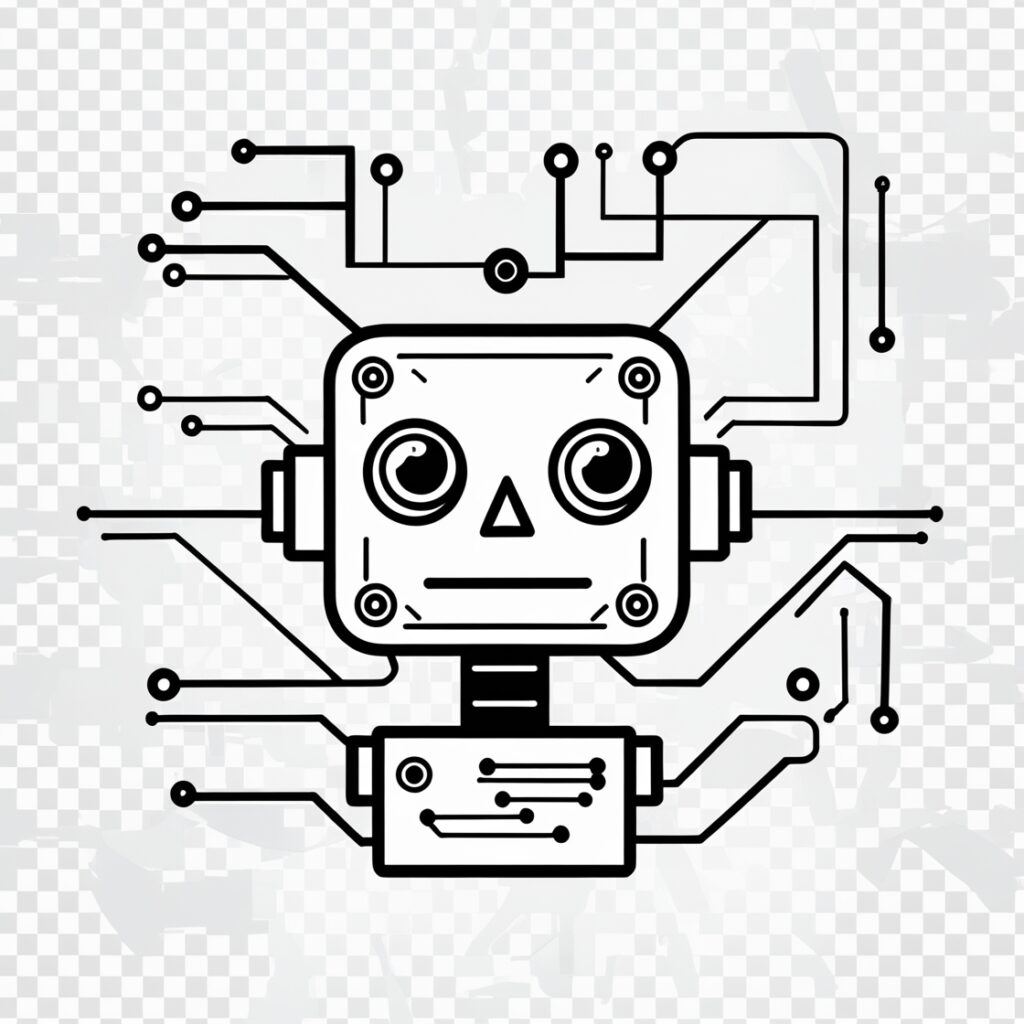In today’s digital landscape, cloud computing has transformed the way organizations manage their resources and applications. For developers, IT professionals, and tech learners, understanding the vital concepts of cloud services is not just an option; it’s a necessity. This guide will delve into the different layers of cloud computing—SaaS, IaaS, and PaaS—while exploring practical applications, learning paths, industry impacts, and future trends that will shape your career in technology.
Key Takeaways
- Comprehend the core cloud computing frameworks and their functionalities.
- Identify educational opportunities that enhance understanding and application of cloud services.
- Recognize industry trends and the emergence of citizen developers.
- Leverage tools like Microsoft Power Platform and AWS HoneyCode for application development.
- Understand skills and certifications that bolster your career in cloud computing.
Technical Background and Context
Cloud computing has revolutionized the way businesses operate by providing a flexible and scalable model for resource management. At its core, it consists of three primary service models:
- Software as a Service (SaaS): This model allows users to access software applications via the internet on a subscription basis. Popular examples include Salesforce for CRM and Slack for team collaboration.
- Infrastructure as a Service (IaaS): IaaS offers virtualized computing resources, enabling businesses to manage and scale their applications effectively. AWS EC2 and Google Cloud Compute Engine are prominent examples.
- Platform as a Service (PaaS): PaaS provides a framework for developers to build, deploy, and manage applications without the complexities of managing underlying infrastructure. Google App Engine and Microsoft Azure App Services are notable PaaS offerings.
Practical Applications and Use Cases
Understanding these cloud computing models can lead to effective solutions in various business processes:
📚 Recommended Digital Learning Resources
Take your skills to the next level with these curated digital products:
AI Enhanced Resume Builder
AI Resume Builder Flask App – Complete Source Code + PDF Tutorial + HTML | Digital Download for Designers
Learn AWS: Your First Cloud Application
Learn AWS: Your First Cloud Application
📊 Key Learning Points Infographic

Visual summary of key concepts and actionable insights
Comprehensive SAT Prep: 470+ Vocabulary Words
Comprehensive SAT Prep: 470+ Vocabulary Words
Master DevOps in Practice – 50 Essential Topics for Engineers (PDF eBook)
Master DevOps in Practice – 50 Essential Topics for Engineers (PDF eBook)
The Ultimate Keyboard Shortcut Guide 49 Software Cheat Sheets in One PDF Bundle
The Ultimate Keyboard Shortcut Guide 49 Software Cheat Sheets in One PDF Bundle
- SaaS for Business Processes: Companies can streamline operations using SaaS applications. For instance, using CRM tools like HubSpot can enhance customer engagement and data management.
- IaaS for Application Management: Businesses can deploy applications quickly using IaaS solutions. A startup can leverage AWS to host its web application, ensuring scalability without heavy upfront investment.
- PaaS for Development: A developer can build and deploy an application on a PaaS like Heroku, which simplifies the development process by allowing them to focus on code rather than infrastructure management.
Learning Path Recommendations
To harness the power of cloud computing, consider the following learning paths:
- Utilizing SaaS Applications: Learn to implement SaaS tools that optimize business processes. Take online courses focused on CRM platforms or project management tools to understand their integration into business workflows.
- Understanding IaaS: Familiarize yourself with IaaS solutions such as AWS and Azure. Engage in hands-on labs to build and manage virtual machines and applications in a cloud environment.
- Exploring PaaS: Gain skills in application development with PaaS tools like Microsoft Power Platform, which includes Power Apps, Power Automate, and Power Virtual Agents. This will prepare you for a career in rapid application development.
Industry Impact and Career Implications
The rise of cloud computing has also led to the emergence of the citizen developer—a non-technical user who creates applications using low-code or no-code platforms. This trend has democratized app development, allowing more individuals to contribute to their organizations’ technology needs.
As cloud technologies continue to evolve, there is a growing demand for professionals skilled in leveraging these resources. Being proficient in cloud services not only enhances your employability but also positions you as a valuable asset in your organization. Skills in using cloud platforms and understanding automation tools for citizen developers can significantly boost your career trajectory.
Implementation Tips and Best Practices
When implementing cloud services, consider the following best practices:
- Choose the Right Model: Assess your organization’s needs to select the appropriate service model (SaaS, IaaS, or PaaS) that aligns with your business goals.
- Ensure Security and Compliance: Always prioritize data security and compliance with industry standards when migrating to the cloud. Utilize encryption and access controls to protect sensitive information.
- Monitor Performance: Use cloud monitoring tools to track application performance and resource usage. This allows for timely adjustments and optimization.
- Educate Your Team: Provide training for your team on cloud services and best practices. Empowering your workforce will lead to better utilization of cloud resources.
Future Trends and Skill Requirements
The cloud computing space is ever-evolving, with trends such as:
- Integration of AI: The incorporation of artificial intelligence in cloud services is enhancing data analytics and automating workflows, making it crucial for professionals to gain AI literacy.
- Low-Code/No-Code Development: Tools like Microsoft Power Platform and AWS HoneyCode are simplifying the development process, allowing non-coders to create applications. Familiarity with these tools will be increasingly valuable.
- Focus on Multi-Cloud Strategies: Organizations are increasingly adopting multi-cloud strategies for greater flexibility and redundancy. Understanding how to manage applications across multiple cloud environments will be a sought-after skill.
Conclusion with Actionable Next Steps
Now is the time to leverage the opportunities that cloud computing presents. Here are some actionable next steps:
- Enroll in online courses or certifications focused on cloud computing services (SaaS, IaaS, PaaS).
- Experiment with tools like Microsoft Power Platform or AWS HoneyCode to enhance your application development skills.
- Stay updated on industry trends through tech blogs, webinars, and networking with professionals in the field.
- Consider joining online communities or forums to discuss cloud computing topics and share insights with peers.
By investing in your education and skill development in cloud computing, you can position yourself at the forefront of technology and unlock a world of possibilities in your career.
Disclaimer: The information in this article has been gathered from various reputed sources in the public domain. While we strive for accuracy, readers are advised to verify information independently and consult with professionals for specific technical implementations.
Ready to advance your tech career? Explore our digital learning resources including programming guides, certification prep materials, and productivity tools designed by industry experts.



